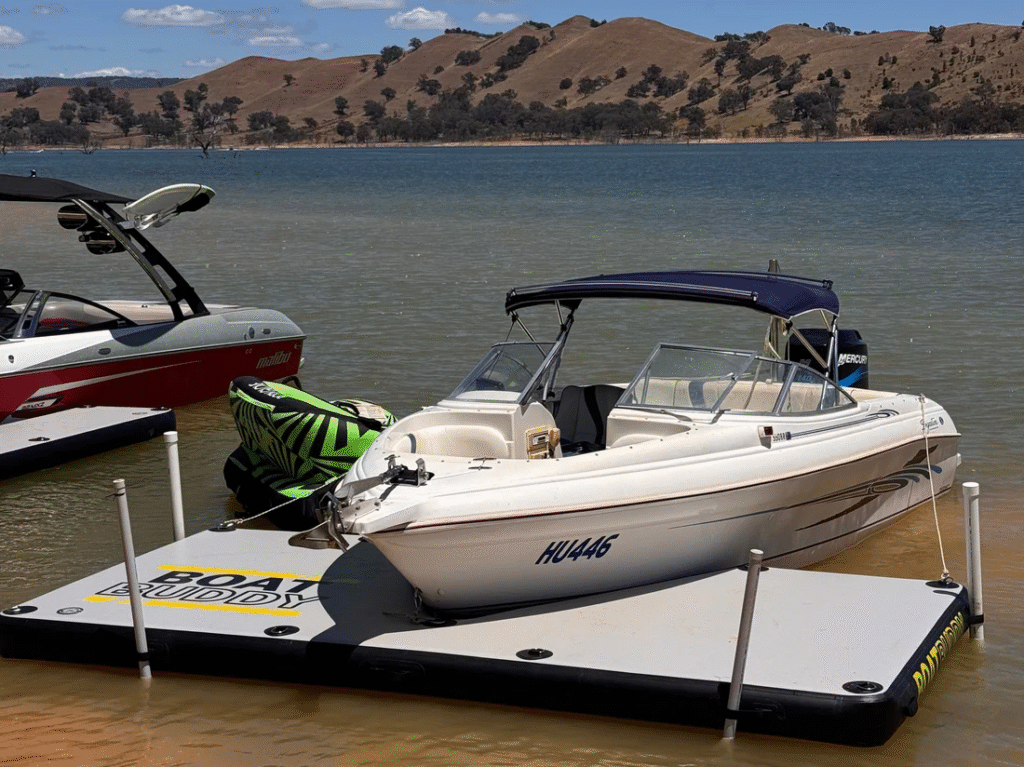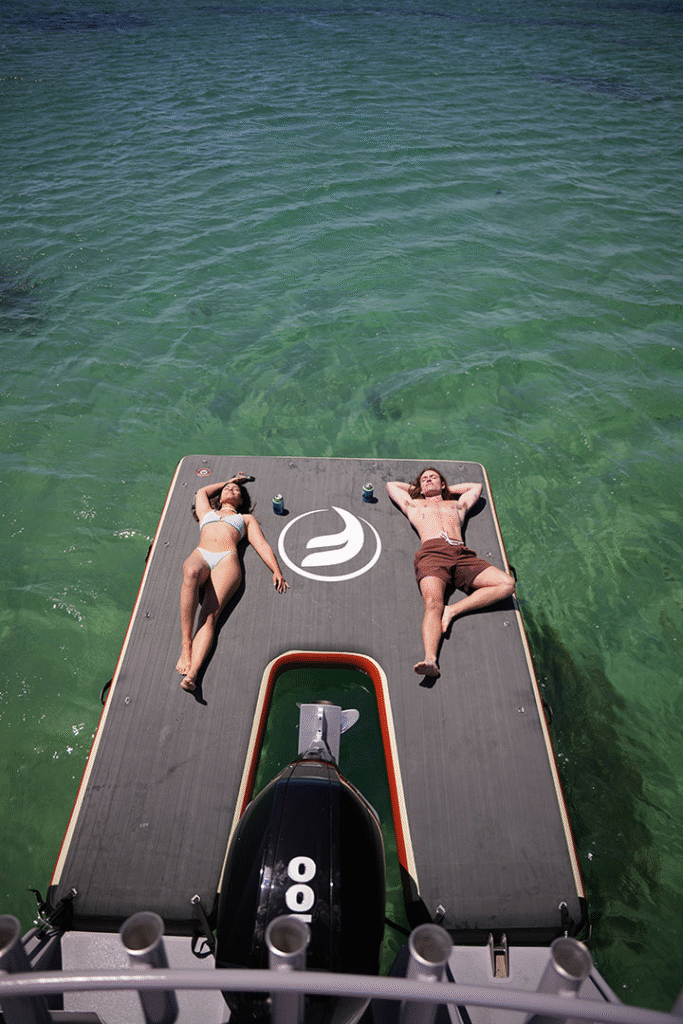
Floating docks offer a versatile, durable, and often cost-effective solution for boat owners and waterfront property managers—especially in areas where water levels vary throughout the year. Whether you’re setting up a personal lakefront dock, managing a marina, or looking to extend your waterfront living, floating docks provide the flexibility and resilience that traditional fixed docks can’t always deliver.
Benefits of Floating Docks
Adaptability to Changing Water Levels

One of the most significant advantages of floating docks is their ability to adjust naturally to fluctuating water levels. Since they sit on the water’s surface, they rise and fall with the tide or rainfall. This ensures that the dock height remains consistent relative to your boat, making boarding safer and easier year-round—an essential feature in tidal zones or reservoirs with seasonal changes.
According to ShoreMaster, this adaptability is particularly beneficial in lakes or rivers where permanent structures might become submerged or left hanging above water during dry spells.
Easy Installation and Removal

Unlike fixed docks that require pilings, concrete, or deep foundation work, floating docks are much easier to install. Most modular systems can be assembled with basic tools and anchored into place using cables, poles, or weighted systems.
EZ-Dock highlights that these systems are ideal for seasonal boaters because they can be removed just as easily when winter or storm season arrives. This flexibility reduces off-season damage and extends the lifespan of the dock.
Low Maintenance
Because floating docks lack permanent underwater pilings and structural footings, they avoid many of the common maintenance problems seen in fixed docks—like rust, rot, and marine growth. Materials like high-density polyethylene (HDPE), plastic, or treated aluminum are corrosion-resistant and stand up well to UV exposure and wave action.
As noted by Wave Armor, floating docks made from marine-grade plastic require minimal cleaning and don’t splinter or warp like wooden alternatives.
Customization Options
Floating docks are inherently modular. This means they can be shaped, resized, or expanded over time to meet your changing needs—whether it’s adding a swim platform, kayak launch, or extra jet ski ports. Many companies, like Light as Air Boats, offer systems that snap together like building blocks, making it simple to reconfigure layouts without tearing down the entire dock.
Additionally, some systems allow for color, texture, and accessory customization to match your landscape and aesthetic preferences.
Protection for Boats
By naturally adjusting to water levels, floating docks reduce the stress on your boat lines, cleats, and fenders. This minimizes hull damage from waves slamming the boat against a rigid surface or stretching mooring lines.
Platforms with rubber edges or molded bumpers, like those from MasterDocks and Wave Armor, provide even more security, especially during storms or high winds.
Cost-Effectiveness
While floating docks might have a higher upfront cost compared to a basic wooden fixed dock, their lower maintenance, easy installation, and modular flexibility can save money long-term.
As Duncan Seawall points out, fixed docks require ongoing piling inspections, board replacements, and sometimes even permits for repair or extension—costs that floating docks can avoid entirely.
Choosing a Floating Dock

Consider Your Location
If you’re dealing with fluctuating water levels, soft lake beds, or tidal changes, floating docks are clearly the better choice. They remain functional even when water levels drop significantly, unlike fixed docks which may become unusable or even dangerous when the water recedes.
FWM Docks and EZ Dock Northeast recommend floating systems for properties with uneven shorelines, deep water drop-offs, or areas where drilling pilings would be difficult or expensive.
Think About Your Needs
Do you need a dock for launching kayaks, docking fishing boats, or entertaining guests? A floating dock system can be tailored accordingly. For instance:
- Jet ski docks can be drive-on style
- Kayak launches can be integrated with low-profile edges
- Entertainment platforms can include benches, ladders, or sunshades
Commercial users may require heavier-duty systems with larger weight capacities, whereas private lake homes can opt for lighter, more flexible setups.
Choose the Right Material
Floating docks are typically made from three main materials: plastic (polyethylene), aluminum, and wood:
- Plastic (HDPE): Lightweight, highly durable, and maintenance-free. Plastic doesn’t rust, rot, or splinter. Perfect for low-effort setups and seasonal use.
- Aluminum: Offers superior strength and a premium finish. It’s ideal for larger boats, commercial marinas, and those who want a longer-term investment.
- Wood: Aesthetic and traditional but prone to decay and high maintenance unless regularly sealed and repaired.
As Duncan Seawall highlights, plastic floating docks are leading the trend because they combine performance, aesthetics, and ease of use with low long-term costs.
Factor in Aesthetics
Your dock should complement your waterfront. Whether you want a clean, modern design with textured grey surfaces or a natural look that blends with your landscape, floating docks offer customizable design options.
Some systems even come with built-in lighting, edge trim colors, and branding capabilities—ideal for commercial marinas or resorts.
Prioritize Stability
Not all floating docks are created equal when it comes to stability. Stability depends on float size, spacing, and anchoring method. Wider platforms with larger pontoons offer better balance, especially in choppy conditions or when supporting larger groups of people or equipment.
Yachting World recommends looking for docks with reinforced float chambers, anti-slip decking, and structural reinforcements—particularly for areas exposed to wind or waves.
Conclusion: Is a Floating Dock Right for You?
If you’re looking for a docking solution that offers adaptability, minimal maintenance, and long-term savings, a floating dock is a smart investment. Whether you’re on a serene lake or a tidal river, floating systems provide safe, stylish, and scalable platforms for all types of marine needs.
They’re also future-friendly. As shoreline use changes or waterfront needs grow—adding jet skis, kayaks, or even outdoor lounges—modular floating docks let you expand and evolve your setup with ease.
✅ Key Takeaways
- Floating docks are ideal for fluctuating water levels and seasonal use.
- They are easier to install and maintain than fixed docks.
- Modular, customizable, and built to last—plastic and aluminum options dominate the market.
- Proper stability and design choices ensure safety and long-term usability.